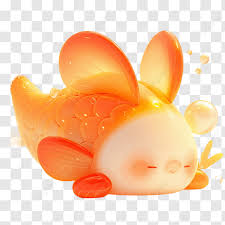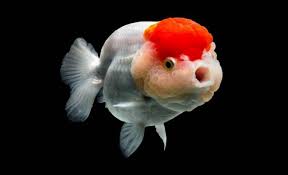
Preserving the delicate aroma, flavor, and health benefits of Chinese fresh tea requires more than simply tossing leaves into any container. From green teas to aged Pu-erh, each variety demands specific care to maintain its optimal profile. Below is a comprehensive guide—spread across key factors, storage methods, and practical tips—designed to help tea enthusiasts keep their Chinese fresh tea tasting as vibrant on the last cup as it did on the first.
1. Why Proper Storage Matters
- Aroma Preservation: Tea’s aromatics are volatile compounds that dissipate quickly when exposed to air, heat, or light.
- Flavor Integrity: Oxidation and absorption of external odors can flatten or alter taste profiles.
- Nutrient Retention: Catechins, polyphenols, and vitamins degrade under unfavorable conditions.
- Longevity: Properly stored tea can remain fresh for months—or in the case of Pu-erh—years, whereas poorly stored tea goes stale in weeks.
2. Five Enemies of Fresh Tea
- Moisture
- Promotes mold growth and dissolves tea solids prematurely.
- Heat
- Speeds oxidation, causing flavors to become dull and bitter.
- Light
- Degrades chlorophyll and aromatic compounds, leading to flat, faded tea.
- Oxygen
- Accelerates staling by oxidizing polyphenols.
- Odors
- Tea absorbs nearby smells (spices, coffee, cleaning agents), which taint its natural aroma.
3. Choosing the Right Storage Container
- Airtight Metal Tins
- Pros: Blocks light, moisture, and odors; durable for daily use.
- Best for: Green, white, and oolong teas.
- Ceramic or Porcelain Jars
- Pros: Stable temperature, opaque to light, moderately airtight.
- Best for: Pu-erh and aged teas needing gentle airflow.
- Vacuum-Sealed Bags
- Pros: Removes air, ideal for long-term storage.
- Caveat: Can compress leaves—use only for storage, not for multiple re-openings.
- Opaque Glass Jars (Short-Term)
- Pros: Easy monitoring of contents.
- Cons: Light penetrates—use only for tea you’ll consume within days.
4. Ideal Storage Environment
- Temperature: 10–25 °C (50–77 °F)—avoid temperature swings.
- Humidity: Below 50% relative humidity; add desiccant packs if necessary.
- Light: Complete darkness—store inside cupboards or opaque containers.
- Odor-Free Zone: Keep tea far from spices, coffee, perfumes, or detergents.
Quick Tip: Label containers with purchase dates and tea type; practice “first in, first out.”
5. Tea-Specific Storage Guidelines
5.1 Green Tea
- Shelf Life: 6–12 months.
- Storage: Ideally refrigerated at 5 °C (41 °F) in airtight tins to slow oxidation.
- Avoid: Frequent temperature changes—transfer to a separate small tin for daily use.
5.2 White Tea
- Shelf Life: Up to 2 years; many improve with light aging.
- Storage: Cool, dark pantry in breathable ceramic jars—gentle aging enhances flavor.
- Humidity: Keep stable; avoid overly dry or damp environments.
5.3 Oolong Tea
- Shelf Life: 6 months to 2 years depending on oxidation level.
- Storage: Airtight tins in a cool, dark place; darker, roasted oolongs tolerate slightly warmer conditions.
- Rotation: For lightly oxidized oolongs, use within months to savor fresh floral notes.
5.4 Black Tea
- Shelf Life: 1–2 years.
- Storage: Room temperature in sealed tins or vacuum bags; keep away from heat sources.
- Note: Avoid refrigeration—condensation can degrade flavor and cause mold.
5.5 Pu-erh Tea
- Shelf Life: Improves over decades.
- Storage:
- Sheng (Raw): Slightly humid (60–70%), porous clay jars or bamboo baskets to allow aging airflow.
- Shou (Ripe): Airtight tins in a cool, dark pantry to preserve mellow flavors.
- Showcase: Store cakes upright and spaced to promote even airflow.
6. Advanced Preservation Techniques
- Nitrogen Flushing: For large-scale or extremely high-end teas, flushing packaging with nitrogen displaces oxygen.
- Desiccants: Silica gel packs help maintain low humidity—ensure food-grade and replace periodically.
- Small Batches: Divide large tea purchases into smaller, daily-use containers to minimize repeated exposure.
- Sealed Pouches: Use resealable aluminum foil pouches for extra barrier against light and moisture.
7. Recognizing Signs of Stale Tea
- Flat Aroma: Loss of primary fragrance—no floral, fruity, or grassy notes.
- Dusty Taste: Tongue-numbing or papery mouthfeel.
- Mold: Visible white or green spots—discard immediately.
- Clumping: Leaves sticking together from moisture absorption.
Proper storage prevents these issues and maintains tea quality until your last cup.
8. Buying Tips for Long-Term Freshness
- Purchase in Season: Spring harvests (first flush) offer the freshest teas.
- Small Quantities: Buy what you’ll consume in 3–6 months (except Pu-erh).
- Check Packaging Dates: Choose teas with clear harvest or packaging dates.
- Seek Reputable Vendors: Quality assurance and good storage practices begin before your purchase.
9. Daily Handling and Best Practices
- Use a Dedicated Scoop: Prevent contamination from other foods or spices.
- Avoid Moist Fingers: When scooping, ensure your hands are dry to keep leaves crisp.
- Brewing Area: Keep brewing station free of splashes or spills—clean tins regularly.
- Rotate Stock: Use older teas first; refill tins from bulk only when empty.
10. Frequently Asked Questions
Q: Can I freeze my tea to prolong freshness?
A: Freezing can damage cell structure and introduce moisture. Only advisable for extremely high-end teas, and only if vacuum-sealed and thawed properly.
Q: How often should I replace desiccant packs?
A: Check monthly; when packs feel damp or change color (if indicator type), replace them.
Q: Is it okay to store different teas together?
A: Never mix—each tea’s aroma can cross-contaminate. Always use separate containers.
11. Conclusion
Storing Chinese fresh tea to preserve its flavor is both a science and an art. By controlling moisture, temperature, light, oxygen, and odors, choosing the right containers, and following tea-specific guidelines, you can ensure every cup remains as vibrant and aromatic as intended. Whether you’re savoring the grassy sweetness of a green tea, the floral perfume of an oolong, or the earthy complexity of Pu-erh, these storage practices make all the difference between a good cup and a truly exceptional one.









